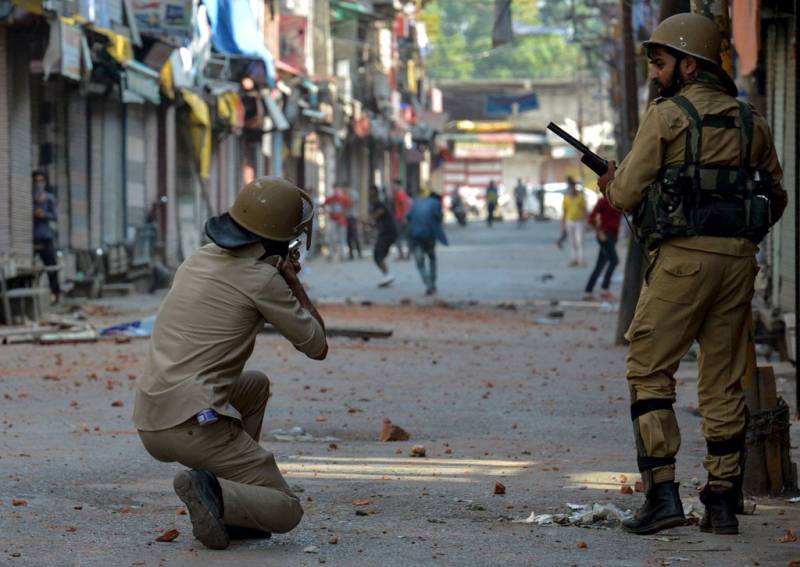Indian human rights violations in Kashmir on the rise
Shares

ISLAMABAD: The Kashmiris have been struggling to get freedom from the Indian occupation for the last seven decades and the martyrdom of Burhan Wani has given a new impetus to the Kashmir Movement.
The United Nations (UN) report of June 4, 2018 has exposed the atrocities in Indian Occupied Kashmir (IOK) and brought India’s violation of basic human rights in the occupied valley before the world.
According to the report 145 civilians were killed by Indian Security Forces while upto 20 civis killed by the armed police.
Some 6,221 people were injured by pellet guns in Indian Occupied Kashmir between July 8, 2016 and February 27, 2017. Among the victims some 728 persons had eye injuries and around 54 people suffered visual impairment due to pellet injuries.
The civil society organizations noted that the number of people partially, or completely blinded due to pellet injuries was higher.
A right to information query found that 16 personnel from the Jammu and Kashmir Armed Police were also injured by pellet-firing shotguns.
Similarly, there are varying figures of the number of Kashmiri Pandits who were killed by armed groups, since an armed insurgency started in the late 1980s.
According to the Kashmiri Pandit Sangharsh Samiti, which represented the small Pandit population that had remained in Kashmir, approximately 650 Kashmiri Pandits had been killed by armed groups. Other Pandit groups, especially those based outside Kashmir, claimed much higher figures than the reported one.
A 2008 Jammu and Kashmir Police report stated that 209 Pandits had been killed since 1989. In December 2017, the Union Ministry of Home Affairs told the Parliament that according to state government figures, 174 Kashmiri Pandits had been killed by armed groups. The state police had filed charges in 30 cases while 142 cases had been reported as “untraced,” the report added.
In 2017, a Kashmiri Pandit group, ‘Roots in Kashmir,’ petitioned the Supreme Court of India, calling for investigations into the killing of Pandits and their “exodus” from the Kashmir Valley.
It sought to reopen 215 cases in which over 700 members of the Kashmiri Pandit community were killed in 1989-90.
The Supreme Court dismissed the petition on the grounds that “more than 27 years have passed…. no fruitful purpose would emerge, as evidence is unlikely to be available at this late juncture. Using of human shields has exposed Indian Military unethical behavior violating all norms.
Raping of a young eight-year-old Kashmiri girl Asifa Bano of Rasana village in Kathua in the north Indian state of Jammu and Kashmir and the forced conversions to change Kashmir demographics was also seen with suspicion.
The year 2018 was the worst year where 355 casualties were reported including 55 martyred and 300 injured. Pellet guns were used against innocent children particularly young girls.
The UN report had asked for inquiry into the Indian atrocities. Even Farooq Abdullah rejected the Indian allegations calling it rubbish and said India has to look inwards.
In February 2018, the Support Group for Justice for Kunan Poshpora Survivors filed a petition before the State Human Rights Commission, urging the investigation into all cases of alleged sexual assault by security forces and non-state actors as well as reparations for survivors.
The group provided the Commission with documentation in 143 cases of alleged sexual violence committed between 1989 and 2017.
One significant case that illustrated the state’s failure to investigate and prosecute allegations of sexual violence and addressing impunity for sexual crimes in Kashmir is the Kunan-Poshpora mass rape, which took place 27 years ago.
On the night of February 23, 1991, soldiers from the 4 Rajputana Rifles regiment of the Indian Army gang-raped around 23 women of Kunan and Poshpora villages of Kupwara district and for which attempts to seek justice have been denied and blocked over the years by the authorities at different levels.
APP
